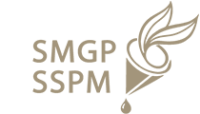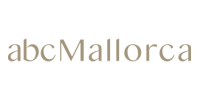Inattentive ADHD
12 Minutes
CONTENTS
People with inattentive ADHD have trouble paying attention to small details, are easily distracted, often find it hard to organize or finish work, and often forget to do simple things like return phone calls or pay bills on time.

Attention issues can be a challenge for individuals of all ages. Whether you have the inattentive subtype of ADHD or a loved one does, this review will provide you with an overview of the condition and practical, thorough coping strategies.
Attention deficit hyperactivity disorder (ADHD) is a brain disorder that affects how the brain develops and works. This disorder usually starts in childhood but stays with people into adulthood. It affects about 5% of the world’s population.
A diagnosis of ADHD will consist of one of the following three specifiers: These terms provide more information about a person’s experience. The term “inattentive” refers to difficulties in focusing and paying close attention to detail.
ADHD is distinguished by two categories of symptoms:
Symptoms of inattention: These symptoms may make it difficult for the individual to pay close attention or remain organized.
Symptoms of impulsivity and hyperactivity: These can make it challenging for an individual to sit still, forcing them to continually move around. They can struggle to manage their desires and behaviors.
There are three forms of ADHD, classification based on the individual’s symptoms:
ADHD Inattentive Type: This particular type of ADHD is characterized by ADHD inattentive symptoms. People with this form of ADHD may exhibit little or no hyperactive and impulsive behaviors. This kind of ADHD is occasionally referred to as attention deficit disorder (ADD), even though the term ADD is obsolete and no longer utilized.
ADHD Hyperactive/Impulsive Type: This subtype of ADHD is characterized by signs of impulsivity and hyperactivity. Individuals with this form of ADHD may have minimal or no signs of inattention.
ADHD Combined Type: Individuals with ADHD combined type exhibit symptoms of hyperactivity, inattention, and impulsivity. The most prevalent kind of ADHD.
A specifier is an additional element added to a diagnosis rather than a distinct diagnosis. Specifiers assist psychologists in describing a patient’s symptoms and making therapy options.
ADHD with inattention is not a kind of ADHD. It is simply a more precise manner of summarizing a person’s symptoms.
It is essential to realize that a child might not have ADHD despite exhibiting symptoms. Numerous life experiences, physiological problems, and mental conditions can result in difficulties and behaviors resembling those of ADHD.
Up to 30 percent of individuals with ADHD have the inattentive subtype. According to a 2014 study, ADHD inattentive type is milder than the other varieties, making it more difficult to diagnose. 6 For example, pupils with this form of ADHD may be less troublesome in school than children with hyperactivity and impulsive symptoms.
Children and adults with this particular inattention deficit disorder primarily exhibit the following ADHD inattentive symptoms:
- Having trouble concentrating on school or work tasks
- Lack of care and attention to detail can lead to thoughtless errors in academics or work assignments.
- Being unorganized, thereby missing meetings, commitments, and deadlines
- Being easily distracted
- Incompletely completing chores, homework, or other activities
- Losing personal possessions and assets frequently
- Frequent forgetfulness
- Not carrying out instructions and showing a lack of attentiveness when spoken to directly.
- Avoiding activities that require prolonged steady concentration
To be labeled with ADHD inattentive type, children and adolescents less than the age of 17 must exhibit at least six of these symptoms. Those older than 17 must have had at minimum five of these symptoms.
Individuals with ADHD inattentive type may also display symptoms of impulsivity and hyperactivity including the following:
- The act of tapping, fidgeting or writhing while seated
- Having difficulties remaining seated, for example in school or at work
- Instead of remaining seated, pacing, or in the case of children, climbing or running, is considered disruptive behavior.
- Making a great deal of noise when playing or engaging in recreational activities
- Feeling incredibly restless and active, as if propelled by a motor
- Speaking too much
- Answering questions before they are asked, talking out of turn, or completing other people’s sentences.
- Unable to calmly wait their turn
- Interrupting, interfering, or assuming control of the conversations or activities of others
Inattentive ADHD is more prevalent among females than males.
In women, inattentive ADHD is frequently undiagnosed or sometimes misdiagnosed as some of its symptoms are mistaken for anxiety or stress.
ADHD with inattention may develop differently in women than in men. Without adaptive coping techniques, women with inattentive ADHD may struggle in the workplace, in school, and in their relationships. Additionally, they may struggle with depression, anxiety, and other mental health problems.
The symptoms of inattentive ADHD can differ from individual to individual. Among the most common in females are the following:
- Falling prey to distractions
- Having an interest in multiple things at once
- Creative thinking
- Difficulty sustaining focus on a single subject
- Disorganization
- Rapid-fire thinking
- Feeling energetic
- Forgetfulness
- Losing track of the passage of time
- Moving on to a second task before completing the first
- Procrastination
- Observing the world in novel ways
- Difficulty following directions
While the symptoms of inattentive ADHD are identical in men and women, they may be harder to diagnose in women. This is because certain characteristics of inattentive ADHD might be comparable to those of other mental health disorders, like depression and anxiety.
Additionally, women with inattentive ADHD may be more inclined to internalize their symptoms, making them less noticeable to others.
There are both benefits and drawbacks associated with inattentive ADHD in females.
Among the advantages of inattentive ADHD (and other forms of ADHD) are:
Being adventurous: When ADHD is successfully treated, impulsivity can make life exciting and inspirational. People with ADHD may utilize this attribute to explore their lifelong hobbies and passions.
Creative thinking: Individuals with ADHD are frequently creative by nature, perceiving the world in novel ways and devising ingenious solutions to difficulties.Creative thinking: People with ADHD are often creative by nature. They see the world in new ways and come up with clever ways to deal with problems.
Increased energy: There are situations where extra energy is advantageous. Individuals with ADHD may excel when completing certain energy-intensive tasks or participating in certain high-energy activities.
Self-awareness: Individuals with inattentive ADHD may be aware of how they are feeling at any given time, which can help them meet their needs, such as taking a break from a task when they are feeling preoccupied or picking up a new skill when they are feeling energized.
Women with inattentive ADHD may also experience anxiety, depression, and other mental health problems.
The possible challenges are listed below:
School Or Academics: People with inattentive ADHD may find it harder to pay attention during long lectures and/or finish tasks on time because of how they act. Individuals with inattentive ADHD can benefit from taking daytime breaks, getting assistance outside of school, and/or getting other educational accommodations.
Professional: Inattentive ADHD can make it difficult to perform work activities or adapt to social norms in the workplace. However, individuals with inattentive ADHD can nonetheless succeed at work. It would be helpful for them to talk to their bosses about how to get more done at work, such as by reducing or getting rid of things that could be a distraction.
Personal relationships: Perhaps you tend to overlook plans with friends or your family and believe you are not present at the moment. Communicate openly with family and friends. Tell them how you’re trying to be there for them, and maybe suggest some ways in which they might assist you.
Here is a comprehensive of time-proven methods and strategies to deal with inattentive ADHD:
Maintaining order and minimizing clutter
The defining characteristics of ADHD include inattention and distractibility, making structure, order, and organization the most difficult task for people with the condition. If you have ADHD, you may feel frustrated by the notion of getting organized, either at home or at work.
Nevertheless, you can manage to break down work into smaller pieces and organize it systematically. By incorporating different structures and routines, as well as utilizing tools like daily calendars and reminders, you may set yourself up to keep order and control disorder. By putting in place different structures and routines and using tools like daily calendars and reminders, you may be able to keep things in order and keep the chaos under control.
To organize a living space, home, or business, you must first categorize your things, determining which are essential and which can be removed. Develop a habit of writing notes and making lists to become more organized. Utilize everyday rituals to preserve your newly organized structure.
Effective usage of a day planner, computer calendar, or smartphone calendar can aid in remembering meetings and deadlines. Digital calendars also let you set up automatic reminders so you don’t forget about things you’ve planned.
Utilize lists and memos to keep a record of regularly scheduled chores, tasks, and deadlines. If you choose to utilize a daily planner, store all lists and notes within it. Additionally, you have numerous options for your smartphone and computer. Look for “to-do” applications and task managers.
Reduce the quantity of paperwork you must manage. Request electronic invoices and statements instead of printed copies.
Tips for time management and maintaining a schedule
Time management issues are a common symptom of ADHD. You may often lose track of time, forget plans or deadlines, put things off, guess wrong about how long it will take to do things, or do chores in the wrong order. Many individuals with ADHD waste so much time on a single subject, known as “hyperfocus,” that they do nothing else. These obstacles might leave you feeling dissatisfied and incompetent, and provoke irritation in others. There are, however, ways to better control your time.
Time management tips. One of the key characteristics of inattentive ADHD in adults is to perceive the passage of time differently. Use the classic trick in the book, a clock, to synchronize your time perception with others.
Wear a wristwatch or a high visibility wall or desk clock to maintain track of the time. Record the time when you begin a task by speaking it aloud or jotting it down.
Use an alarm or a timer to remind you when your allotted time for a certain task has passed. Try setting an alarm that goes off at regular intervals for longer tasks to keep you focused, productive, and mindful of the passage of time.
Adults with ADHD frequently battle with impulse control and move from one topic to another, making it difficult to complete activities and overwhelming to tackle huge undertakings. Adults with ADHD often have trouble controlling their impulses and jump from one topic to another, making it hard to finish tasks and overwhelming to take on big projects. To counteract this:
Take one step at a time. Divide complex tasks or undertakings into smaller, more doable phases.
Stay on task. Stick to your schedule, and if necessary, use a timer to ensure that you don’t get diverted.
Impulsiveness might cause persons with ADHD to accept too many employment or social obligations. However, a crowded schedule might leave you feeling overworked and exhausted, as well as diminish the quality of your job. But a busy schedule could make you feel overworked and tired, and it could also hurt the quality of your work. If you say no to some commitments, you may be able to do more things, keep social plans, and live a healthier lifestyle. Before committing to something new, you should first review your schedule.
Tips for managing finances and expenses
Money management includes planning, budgeting, and organization, therefore it can be difficult for many persons with ADHD. Because they demand too much time, paperwork, and attention to detail, many standard techniques of money management do not function well for adults with ADHD. But if you build a system that is both consistent and simple, you can take control of your finances and eliminate overspending, unpaid bills, and late fees.
An accurate evaluation of your financial condition is the first step in gaining financial control. Begin by recording every expense, regardless of size, for one month. This will enable you to efficiently analyze your current expenses.
The combination of impulsivity caused by ADHD and shopping can be quite risky. It can result in debt and leave you feeling guilty and ashamed. Using a few strategic methods, you can avoid impulsive purchases.
- Leave your credit cards and checkbook at home and only pay with cash.
- Cut up all credit cards except one. Make a list of the items you require for shopping and adhere to them.
- Use a calculator to keep a record of your purchases (hint: your mobile phone has one).
Suggestions for maintaining focus and productivity at work
ADHD can provide unique obstacles in the workplace. The things you may find most challenging—organization, sitting still, task completion, and listening quietly—are the certain things you are frequently required to perform throughout the day.
Managing ADHD and a demanding job is hard, but you can make the most of your strengths and lessen the effects of your ADHD symptoms by customizing your workplace.
Step by step, organize your cubicle, office, or workstation. Then, employ the following measures to maintain order and neatness:
Priority chores should be at the top of your to-do list so that you can complete them first. Establish deadlines for all tasks, even if they are self-imposed.
When you have concentration problems, where you work and your surroundings can have a major impact on your productivity.
Tips for stress management and mood enhancement
Due to the disorganization and impulsivity that often come with ADHD, you may have a bad diet, have trouble sleeping, or not get enough exercise. All of these things can make you feel more stressed, bad-tempered, and out of control. The best way to break out of this pattern is to take charge of your life and start doing new, healthy things.
Eating well, getting enough sleep, and working out regularly can help you stay calm, cut down on mood swings, and fight off anxiety and depression. Eating well, getting enough sleep, and working out regularly can help you stay calm, cut down on mood swings, and fight off anxiety and depression.
Working out is possibly the most beneficial and effective method for reducing hyperactivity and inattention caused by ADHD.
Perform everyday exercises. Choose something active and fun that you can keep up with, like a team sport or working out with a friend.
Reduce stress by working out outside. People with ADHD often feel better when they are exposed to sunlight and greenery.
Get sufficient sleep. Sleep deprivation can exacerbate symptoms of inattentive ADHD in adults, impairing your ability to deal with stress and retain focus throughout the day. Simple changes to daily habits can go a long way toward helping someone get a good night’s sleep.
- Avoid caffeine in the evening.
- Regularly and intensely exercise, but never within an hour of sleep time
- Create a peaceful and predictable “bedtime” routine, such as taking a hot shower or bath immediately before bed.
- Stick to a consistent sleep-wake routine, including on weekends.
Healthy eating. Although improper eating habits may not cause ADHD, they might exacerbate its symptoms. By making small changes to what and how you eat, you may find that your hyperactivity, tendency to get distracted and stress go down a lot. As you get better at meditating and become more familiar with the technique, you can extend the length of your sessions. As you get better at meditating and become more familiar with the technique, you can extend the length of your sessions.
- is inattentive ADHD? ADD symptoms, causes, treatment, ADDitude. Available at: https://www.additudemag.com/slideshows/symptoms-of-inattentive-adhd.
- ADHD inattentive type in adults: Symptoms, diagnosis & treatment. Cleveland Clinic. Available at: https://my.clevelandclinic.org/health/diseases/15253-attention-deficit-disorder-without-hyperactivity-add-in-adults.
- ADHD inattentive type: ADHD PI symptoms, causes, and treatment. WebMD. Available at: https://www.webmd.com/add-adhd/childhood-adhd/adhd-inattentive-type.
- What to know about inattentive ADHD in women. Verywell Mind. Available at: https://www.verywellmind.com/inattentive-adhd-in-women-5294124.
- INATTENTIVE ADHD: Symptoms, diagnosis, and treatment. Medical News Today. MediLexicon International. Available at: https://www.medicalnewstoday.com/articles/315359.
- Understanding ADHD inattentive type, Healthline. Healthline Media. Available at: https://www.healthline.com/health/adhd/inattentive-type.
- Tips for managing adult ADHD. HelpGuide.org. Available at: https://www.helpguide.org/articles/add-adhd/managing-adult-adhd-attention-deficit-disorder.htm.
HOW THE BALANCE CAN HELP
The Balance RehabClinic is a leading provider of luxury addiction and mental health treatment for affluent individuals and their families, offering a blend of innovative science and holistic methods with unparalleled individualised care.
A UNIQUE METHOD
a successful and proven concept focusing on underlying causesOur program consists of treating only one client at a time individually designed to help you with all the problematic aspects of your life. All individual treatment sessions will be held at your private residence.
more infoYour program is designed based on your personal needs. The team will exchange daily information and adjust the schedule as we go. Our therapists will work with you treating the root causes and not just the symptoms and goes beyong your stay to ensure lasting success.
more infoOur biochemical imbalance can be affected by diet and stressful life events, but it often goes back to genetics and epigenetics. We do specific biochemical laboratory testing to determine an individual’s biochemical imbalance. Combining the results of the lab tests with anamnestic information and clinical tests, we prescribe an individualized and compounded vitamin, mineral, nutrient protocol to help recover from various disease states.
more infoOur experts combine the best from psychological treatment, holistic medicine to support you individually and providing complementary therapies all coordinated from one source working complementing each other integrative.
more infoUsing latest cutting-edge technology-based therapies such as Neurofeedback, tDCS, and SSP, we can track the biological patterns of your body, giving us valuable insight into your health and well-being as well support your brain and body performance and recovery with neuromodulation.
more infoComplex trauma is often a key factor to distress mental and physical state. The Balance provides a safe space along integrated trauma treatment methods to enable healing.
more infoLASTING APPROACH
0 Before
Send Admission Request
0 Before
Define Treatment Goals
1 week
Assessments & Detox
1-4 week
Psychological & Holistic Therapy
4 week
Family Therapy
5-8 week
Aftercare
12+ week
Refresher Visit
ADHD Insights
latest news & research on ADHDADHD Statistics
Unfortunately, the projected ADHD statistics show that the prevalence of ADHD will rise further. Although the data on ADHD epidemiology is endless
read moreHyperfixation
Hyperfixation is a term used to describe an intense, obsessive preoccupation with a particular activity, subject, or interest
read moreDepression And ADHD
ADHD and depression are two distinct mental health conditions that can co-occur. It is estimated that around 20-30% of individuals with ADHD also experience depression
read moreInattentive ADHD
People with inattentive ADHD have trouble paying attention to small details, are easily distracted, often find it hard to organize or finish work
read more

























































